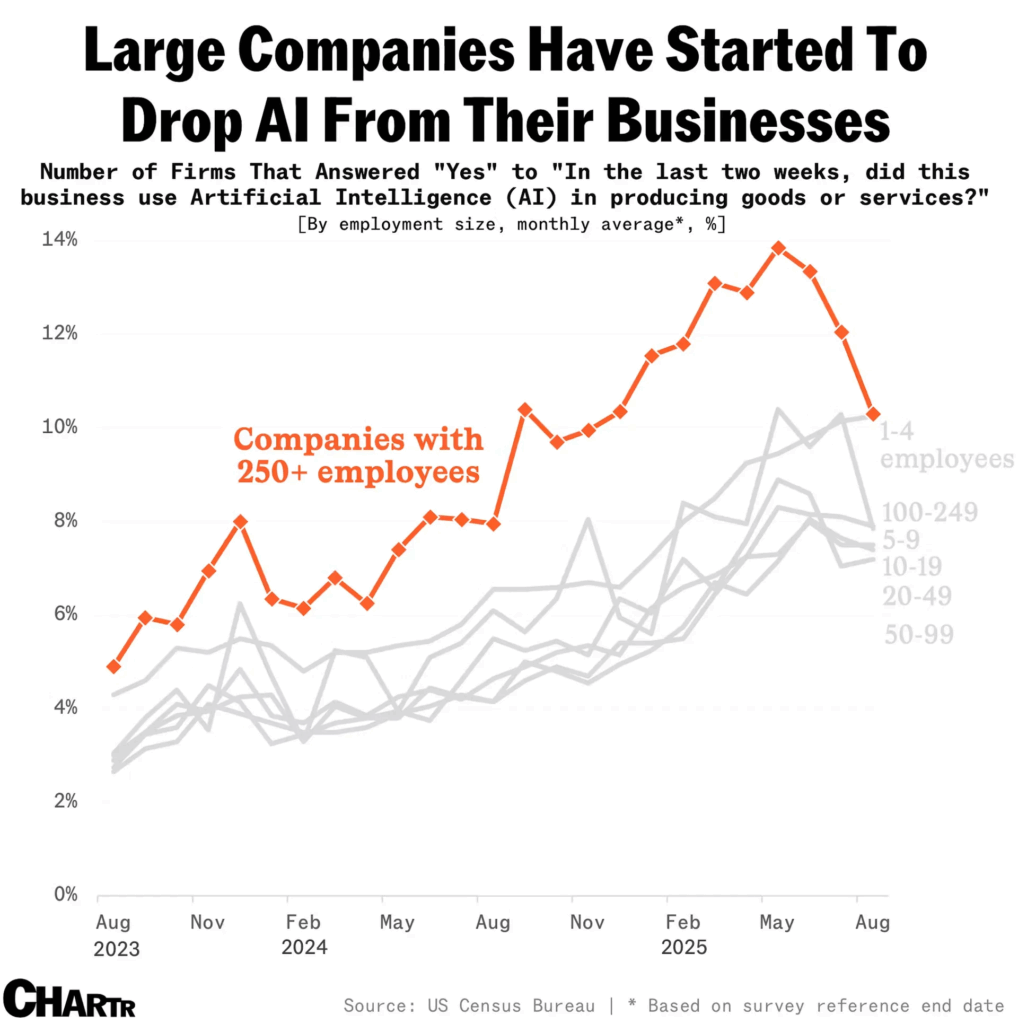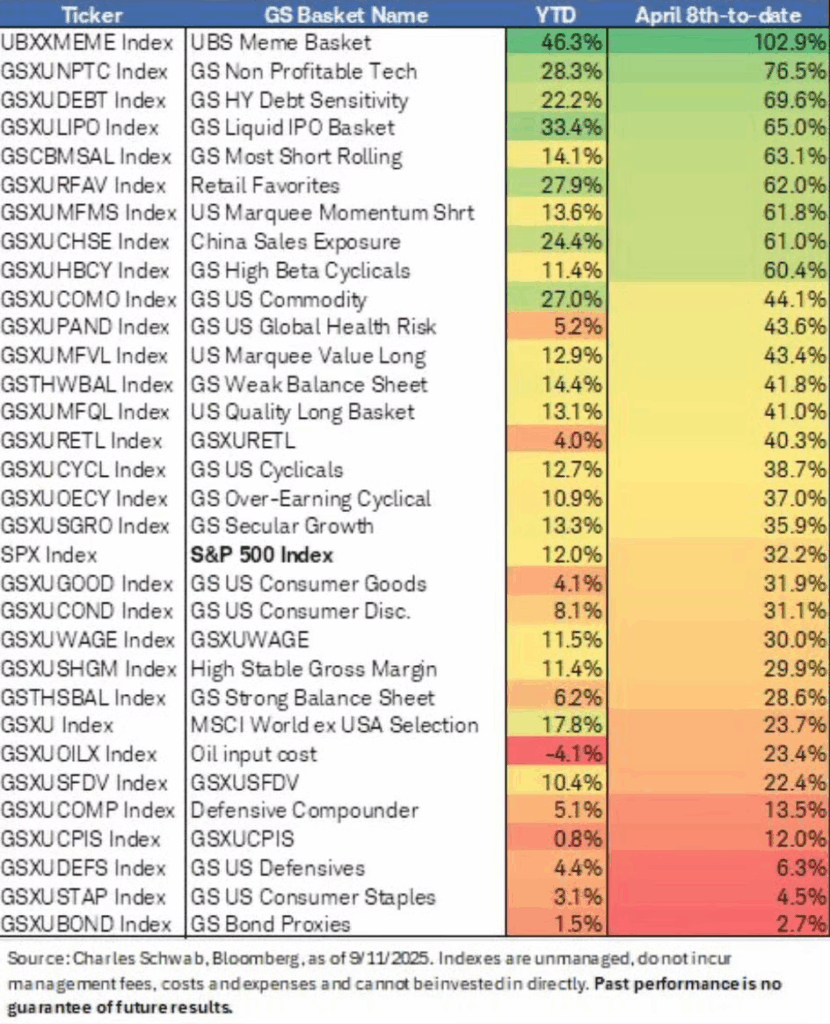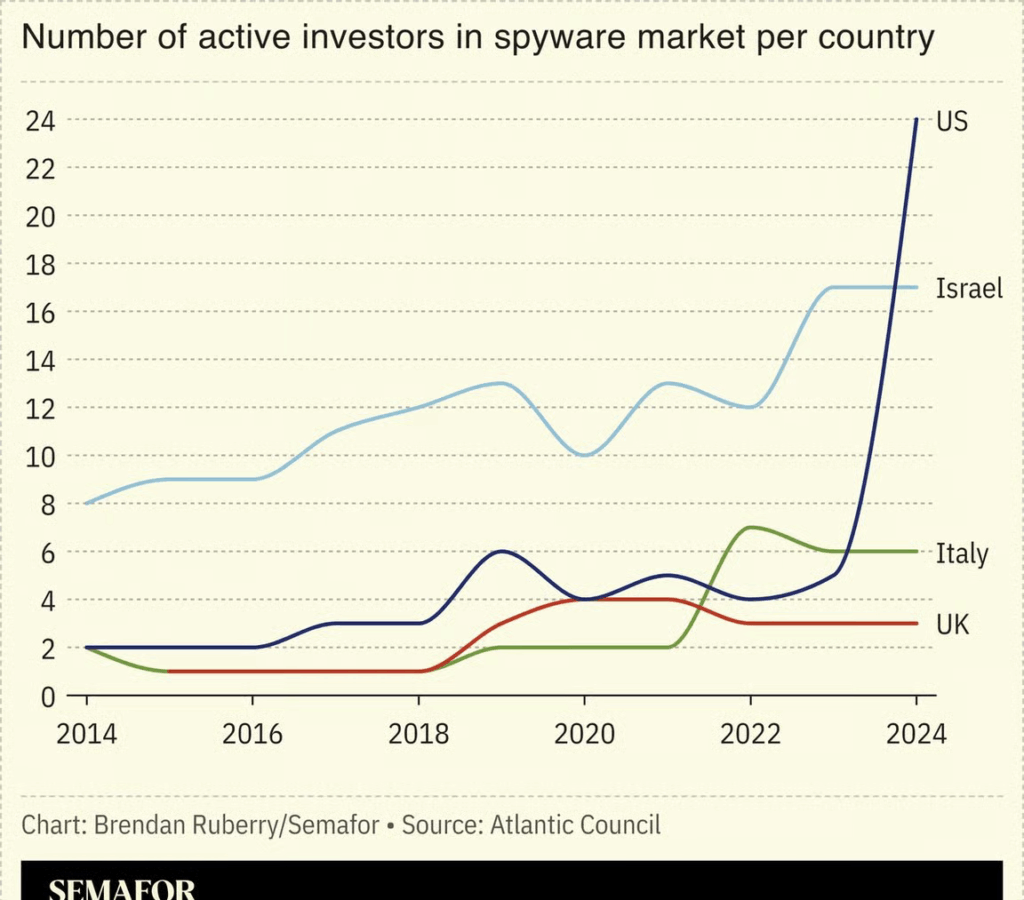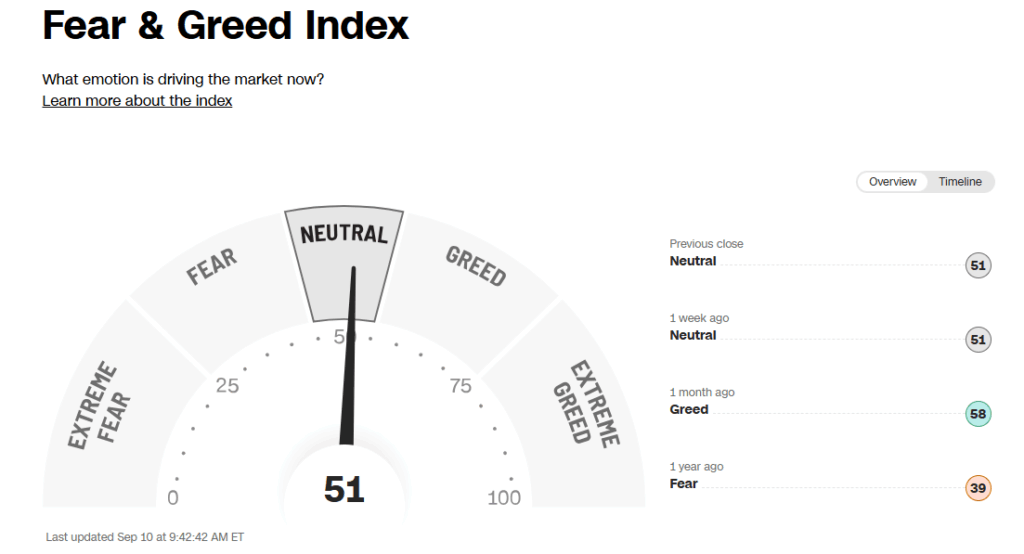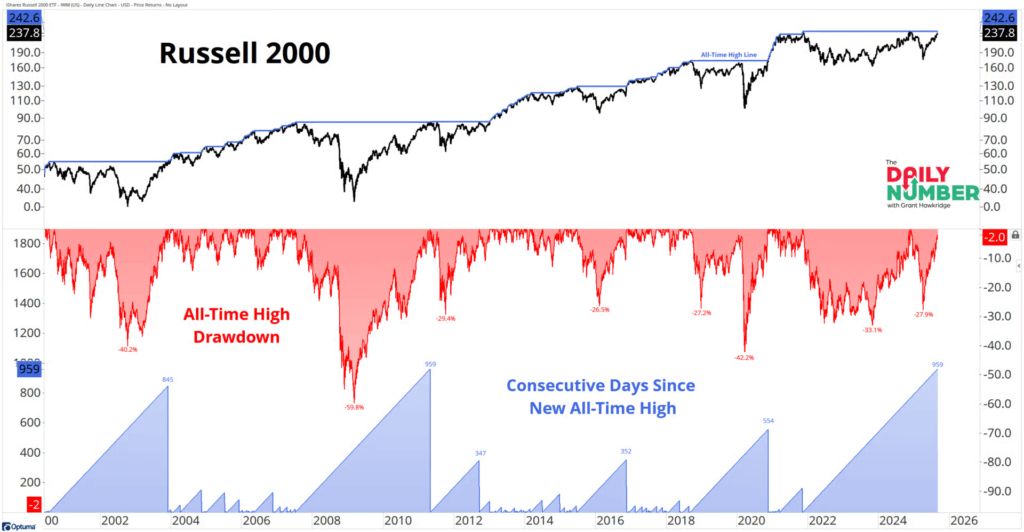1. 63% of Venture Capital Deals in North America are AI—Torsten Slok Apollo

Torsten Slok Apollo
2. StubHub IPO Closes Down on Day….The Company has $2.4B in Debt

3. Predicted Fed Rate Cuts
Goldman Sachs forecasts that the Fed will cut interest rates from 4.3% to 3.1% by the end of 2026.
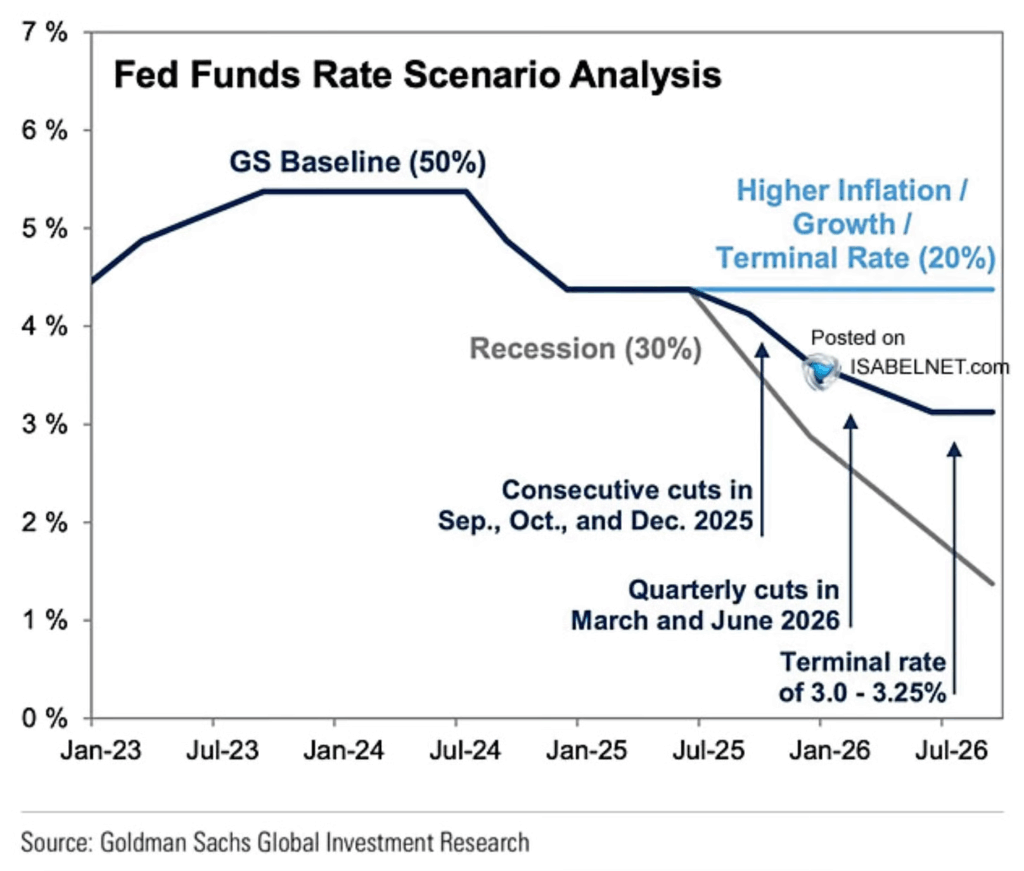
Isabelnet at Spilled Coffee Blog
4. Here is the Stat Fed is Watching…Unemployment Rates Rising 20-24 Year Olds

Charlie Bilello
5. Defensive Consumer Staple Sector Continues Downward
XLP vs. SPY. “In case you’re wondering which type of environment we’re in right now, here’s the Consumer Staples sector relative to the S&P 500 hitting new all-time lows. During healthy markets, this line tends to go down. Currently, the line has never been more down.”

JC Parets – TrendLabs
6. America is a Stock Nation vs. World

Irrelevant Investor Blog
7. U.S. Dollar Closing in On Breaking Support

StockCharts
8. Canada and Mexico American Trade Reliance

Semafor
9. Cboe Plans to Launch Continuous Futures for Bitcoin and Ether, Beginning November 10
- New futures designed to efficiently deliver continuous long-term market exposure to bitcoin and ether
- Aims to provide access to perpetual-style futures in a U.S.-regulated, intermediated environment
- Marks next phase of Cboe’s expanding product innovation roadmap
CHICAGO, Sept. 9, 2025 /PRNewswire/ — Cboe Global Markets, Inc. (Cboe: CBOE), the world’s leading derivatives and securities exchange network, today announced plans to launch Cboe Continuous futures on Cboe Futures Exchange, LLC (CFE) beginning November 10, 2025, pending regulatory review.
The new product suite will debut with bitcoin and ether Continuous futures, offering U.S. traders a simpler and efficient way to gain long-term exposure to digital assets, execute trading strategies and manage risk – all within a U.S.-regulated, centrally cleared and intermediated framework.
Unlike traditional futures contracts that may require periodic rolling, Cboe Continuous futures are planned to be structured as single, long-dated contracts with a 10-year expiration, reducing the need to roll positions over time and simplifying position management. These contracts will be cash-settled and aligned to real-time spot market prices (i.e., spot prices of bitcoin and ether, respectively) through daily cash adjustments, using a transparent and replicable funding rate methodology.
At the HOOD Summit in Las Vegas, Catherine Clay, Global Head of Derivatives at Cboe, remarked: “Perpetual-style futures have gained strong adoption in offshore markets. Now, Cboe is bringing that same utility to our U.S.-regulated futures exchange and enabling U.S. traders to access these products with confidence in a trusted, transparent and intermediated environment. We expect Continuous futures to appeal to not only institutional market participants and existing CFE customers, but also to a growing segment of retail traders seeking access to crypto derivatives. As we continue to expand CFE’s offerings to serve all types of market participants, these futures are a next step to advancing our product innovation roadmap.”
The launch builds on Cboe’s ongoing commitment to further growing and diversifying its CFE product suite, which in addition to its flagship Cboe Volatility Index (VIX) futures include innovative products based on equity volatility, digital assets and global fixed income.
The new bitcoin and ether Continuous futures will be cleared through Cboe Clear U.S., a CFTC-regulated derivatives clearing organization, positioning Cboe to further expand its clearing capabilities as it looks to build a robust global derivatives exchange and clearing ecosystem.
The Options Institute will host educational courses on continuous futures on October 30 and November 20. Registration is open to the public. For more technical information on Cboe’s new bitcoin and ether Continuous futures, visit here.
About Cboe Global Markets
Cboe Global Markets (Cboe: CBOE), the world’s leading derivatives and securities exchange network, delivers cutting-edge trading, clearing, and investment solutions to people around the world. Cboe provides trading solutions and products in multiple asset classes, including equities, derivatives, and FX across North America, Europe, and Asia Pacific. Above all, we are committed to building a trusted, inclusive global marketplace that enables people to pursue a sustainable financial future. To learn more about the Exchange for the World Stage, visit www.cboe.com.
10. Workers to Bear Brunt of Rising Healthcare Costs in 2026

Axios








